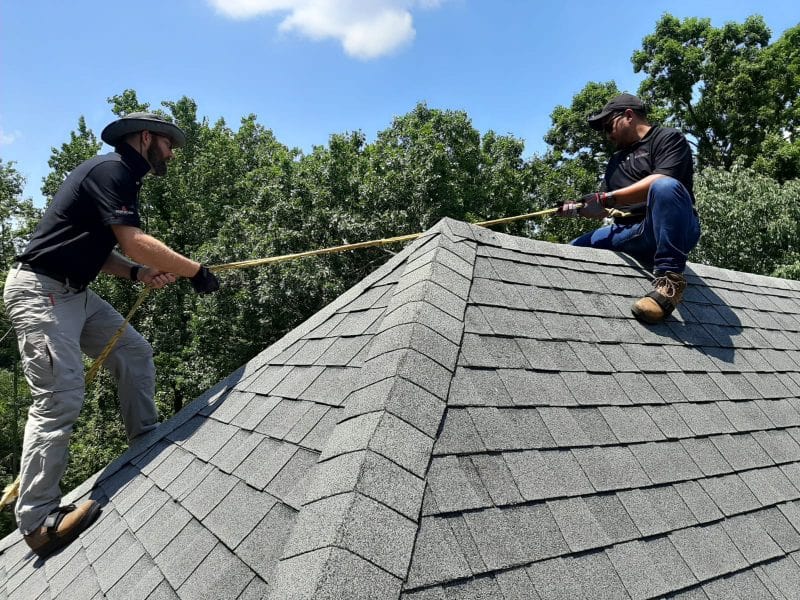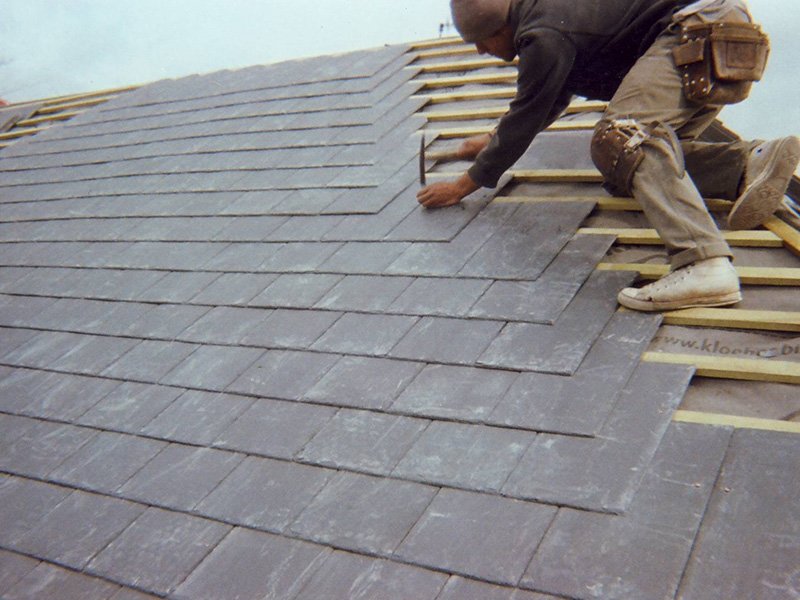Slate Roofing for Beginners

Installing a slate roof calls for details expertise as well as skills however by complying with some fundamental regulations and preventing usual mistakes slate roof covering is additionally within the capabilities of non-professionals. To do it properly, you ought to adopt the complying with practices:
1. General working methods
Do not stroll on the slates during installation. Always work off roofing system ladders as well as roofing scaffolds. This is to avoid sliding slates, i.e. slates that break or fall off after installment.
Chalk your slate training courses. Set up every course along a long-term chalk line on the surface of the roofing system. Do not chalk on the slates themselves. The lines note the top edges of the slates. Procedure where to place your line from the bottom of the roof covering to make sure precision and also consistency. Do not lay the slates without chalk lines as you can conveniently shed your headlap and also destroy the roof covering.
2. Starter program
The starter program is among the most important training courses on a slate roofing system and you need to install it appropriately. Initially, nail a wooden or copper cant or shim under the bottom edge of the starter course. This will turn the starter course so that it goes to the same angle as all various other slates. After that set up the starter training course with the slate face down as well as the back up. The starter program is the only program that is installed in this manner. All various other slates are mounted with the face up, revealing the bevelled edges.
Set up the starter training course as well as the initial program of field slates at the same time. Do not run the starter program ahead of the initial training course unless your starter slates coincide size as the area slates and just have nail holes on the leading edge. This way you will certainly have proper side laps as well as made sure that no nail holes in the starter slates in the joint in between the very first training course slates can produce a leak.
3. Side laps
Make certain you produce the right side puts, i.e. the side overlaps in between the side butts of the starter slates as well as the first program of slates. The side laps must be a minimum of 8 cm.

4. Head lap
Every slate needs to overlap both training courses listed below as well as you have to make certain that you set up the proper head lap. Head lap maintains the roofing watertight. If you get it incorrect your roofing will leakage. The head lap for 8:12 and steeper sloped roof coverings is 8 centimeters. If your roof has a low slope (4:12 or 6:12) the head lap needs to be 10cm.
5. Rug
Slate underlay need to constantly be mounted under the slates and also never ever on top.
6. Ice-damming
Slate roof coverings do not require an ice and also water membrane. If you’re concerned about ice-damming, double the decking felt along the eaves. You can spread out roofing system concrete in between the layers and increase the head lap along the eaves to 13cm.
7. Slate nailing
You have to get your nailing strategy right or you will certainly create damage to the slates. Nails must only be driven to a depth where the nail head exists within the counter-sunk nail hole crater. Doing it properly will guarantee that the nail heads will not massage excessively versus the overlying slates as well as use a hole in them.
Do not over-nail or under-nail the slates. Over-nailing suggests the nail is driven too far and also appears the slate, leaving it holding on one nail or gliding out altogether. When the nail is protruding of the nail hole this is called under-nailing.
8. Flashings
You have to install flashings with the correct overlap or they will leak. Uphill flashing ought to always lap on top of downhill flashing. Edge flashings, e.g. smokeshafts, have to either be properly folded up or soldered to avoid leakage.
Folded flashings can be utilized on favorable inclines whereas soldered flashings are required when the incline is so low that the instructions of the water circulation can not be managed by gravity alone. Soldered flashings have to be set up with cleats or development joints to avoid strain on the solder joints. Never ever solder with an open flame.
9. Hips and also ridges
Ensure the field slates meet limited at the roofing system hip as well as form a right, climate tight, close-mitred junction or install ridge tiles laid to a real line with the edges as well as joints well bedded in mortar. Conversely, you can use metal roll on the hips and ridges.
For more information on various aspects of roof installation, repair, and maintenance visit https://oneworldroofing.com/doctor-phillips-roofing/

